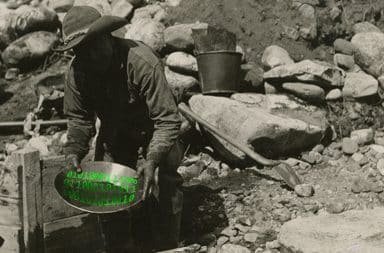Hello Americans,
This is Mike from Canada and I’ve got a bone to pick with you.
You see, the rest of the world and I like to use this amazing standardized system of measurements called “Metric.” I know you’ve heard of it before and probably use it in your everyday life without even knowing it. What I’d like to share with you is the history of the two measurement systems with a tiny bit of hyperbole thrown in for comedic measure. [See what I did there?]
We’ll start with a quick breakdown of the two competing systems.
First we have your Traditional Systems of Weight and Measures. For the point of this article and simplicity, the system will be referred to as “Standard” (units include: grams, ounces, pounds, feet, yards, gallons, Fahrenheit). Right now the United States (doesn't make the top 15 in any global education ranking), Myanmar (government jails members of the press), and Liberia (2017 presidential elections halted because of fraud allegations) are the only three countries on the planet that have not yet switched over to the Metric system. North Korea and all of those “shithole countries” also use it.
Next we move on to the beautiful and elegant Metric system. Everything can be divided or multiplied by 10. Exactly how money works. Now imagine money worked like the Standard measurements for distance, or weight, or volume. A dollar would be worth 3.8 quarters, and a nickel would be worth 5/16ths of a dime. Doesn’t make any cents. [I wish I could turn it off.]
Now let’s jump right into the fray. I’ll go into a bit of the history of how the individual systems were devised and you can decide which one sounds utterly insane.
Length (Metric)
Let me introduce you to a unit of measure called the metre. Yeah it’s pronounced “meter” and that’s probably how you guys would spell it if you were to convert to the clearly superior metric system, but I am getting ahead of myself.
The metre was devised, as all amazing and intuitive things are, by observing the natural world and deriving an ideology that takes into account measurements that already exist.
It all started with taking the distance between the North Pole and the Equator divided by 10 million. I don’t know or care what units were used to measure the distance, but whatever one ten-millionth of that number amounted to, it became the metre.
For perspective, the metre is equivalent to 3.3 feet and is divided into 100 centimeters for smaller measurements, 1 centimetre equalling 0.4 inches. 1000 metres makes up a kilometer which is roughly 0.6 miles.
Length (Standard)
If Metric used the Earth to derive its length measurement, then how did Standard decide? The approximate length of the Roman Emperor Caligula’s grandfather’s actual foot became the foot. Which obviously changed from town to town and over time. And then the Romans used to divide that by 16 and 12 for the inches. Somewhere along the line they stuck with 12 for no reason because it’s all stupid and arbitrary. Now divide the inch into 16ths and 32nds and 64ths and 128ths. Ridiculous.
Mass/Volume (Metric)
Now that we have the metre figured out, it’s time to find a way of measuring weight consistently. Water covers most of the planet, so they took a cubic decimetre of water (this is the only time it’s even used) and decided it equals 1 kilogram. The kilogram is roughly 2.2 lbs and is divisible into the smaller unit of a gram, of which there are 1000 per kilogram.
You’re probably not going to believe this, but 1 kilogram of water is uncoincidentally the exact measure for the liquid volume we call a litre, comparable to 0.26 gallons. It’s important to note that the kilogram of water must be at the specific pressure and temperature of 0 degrees celsius to equal the correct volume. But we’ll get to temperature in the next section.
Mass/Volume (Standard)
Instead of continuing to use some dead guy’s foot to figure out weight, your system took a different approach. One pound (lbs) is equal to 7000 grains of barley. Yep, barley. If you want to use grains of wheat it’s a totally different calculation. And I have no idea why 7000. Hey, it’s your system, don’t look at me. And you divide that into 16 ounces (the opposite choice of the foot to inches option), and on into 28.4 grams for some reason. It absolutely blows my mind.
Oh yeah, and a gallon is obviously equal to 8 lbs of wine. If you want to use beer instead it’s a totally different calculation. A gallon naturally comprises of 128 fluid ounces. If we want to get smaller than an ounce we’d have to break out the teaspoons and tablespoons. It just wouldn’t make sense any other way.
Temperature (Celsius)
We find ourselves in the final section, temperature. The genius of celsius once again uses nature as a guide. The low point 0, is established as the temperature at which water freezes. Separated by a familiar 100 degrees we find the boiling temperature of that same water. Not much else to say about that.
Temperature (Fahrenheit)
Here we go. The year was 1708, the place, a village in Germany. Danny Fahrenheit uses the coldest day in winter to act as 0 degrees (he would later have to invent a consistent way to reproduce this arbitrary measurement using a salt and ice brine). He then guessed the average human body temperature was 96 degrees, to use as the scale’s high point. Someone else had calculated water freezing and boiling temperatures based on relative degrees to the frozen brine, so Danny multiplied those numbers by 4 to create his own scale, and adjusted the temperatures in degrees to fit nicely in his model. You’ll notice that the freezing temperature of water and it’s boiling point are separated by 180 degrees, half a circle for no reason.
There you have it. The metric system is bulletproof and really easy to learn because everything is divisible by 10. It’s less math. Less memorization. I don’t understand why it’s so difficult.
Now that you understand how foolish your precious “Traditional Systems of Weights and Measures” are, you might be less hostile towards learning the scary metric system. If you think about it, most Americans already use with the metric system when discussing breast implants and handguns. [I did it again with bulletproof.]
Liter of cola, anyone?


